Choosing the Right Backpack
| by Jason | 12 Comments » | Travel Gear
A backpack is the most important piece of equipment you will own during your travels. Think of it as your new home, where everything you possess is stored. Now you must lug it around on your back for the next few weeks, months or even years as you backpack the world. This list is intended to provide you with some basic knowledge when choosing a backpack for your travels.
REI Member Free Shipping!
Questions to ask yourself
Where am I traveling to?
Are you an urban backpacker traveling through European cities or are you hiking mountains in New Zealand? Or maybe you’re doing both.
How long am I traveling for?
A few days, weeks, months or more? An extended traveler will possibly need to pack more clothes for varying environments.
What type of accommodations will I be using?
(hotel, hostel, guest house, host family, camping)
If you are staying in hostels you should consider pack security. If camping is your preference you will need a more rugged bag to endure the elements.
What type of transportation will I be using?
(plane, bus, car, motorbike, bicycle)
When using local buses in Latin America you need to ensure your bag is secure and strong. Traveling via bus through less developed countries is an adventure in itself and can cause wear and tear on a pack. Those traveling via two wheels should consider lighter packs.
What style traveler am I?
A flashpacker may carry items like a laptop, camcorder, SLR camera, iPod, smartphone, and external drives. A minimalist may pack a tent, sleeping bag, camping stove and dry food. You may be a combination of the two styles.
Backpack features
Backpacks today are loaded with complex features to meet the demands of this growing segment of travelers. We all have varying priorities when preparing to make our purchase, but it’s important to understand the features we may or may not be getting based on our personal needs. Some of us are on a shoestring budget and others have money to spend. Here are some of the common features and characteristics associated to backpacks.
Volume
The volume of a backpack is typically measured in Liters, and determines how much you can pack into the bag. A 30L pack will do fine for a weekend getaway. Long term travelers should consider 55L or higher.
Frame
The internal frame backpack has become the most common used today. The frame resides within the backpack versus and external frame. These type of packs offer more flexibility because the weight is held close to your torso.
Gender
Packs will often be designated as unisex, but there are distinct characteristics between a male and female pack. A backpack built for a male will have a slightly wider shoulder harness and longer torso. Depending on your individual build, don’t hesitate to try either.
Size
Backpacks can also come in various sizes such as small, medium and large. The size of the individual pack will also impact the original volume listed. For instance, a 70L pack becomes 76L when in a large size. The backpack may also feature an adjustable suspension system which allows you to alter the torso length.
Load type
Traditional backpacks have only been accessible through an opening panel on the top of the pack, however more recently they have begun to offer side loading panels. The side loading panel offers you easier access to your pack contents, but will add weight due to additional materials used. A backpack may also provide an access point at the bottom for sleeping bag storage. This compartment is usually separated by material from the main compartment area. The benefit here is that if you are camping, each night your can easily access your sleeping bag without emptying your entire bag contents.
Durability
This term is very subjective, but important based on your backpacking needs. Durability can be measured by the type of material used throughout the entire pack. A thicker gauge material will add wear and tear protection. Straps made of a stronger plastic might hold up longer. Check the material used on the bottom of the backpack. In many cases it’s double lined or a thicker gauge material. In extreme cases you may find the bottom is made of rubber or leather. The material used for the stays or framesheet, which both add stability and protection can vary greatly. Remember, added durability typically results in a heavier pack. Take a close look at the stitching as well. The material used for straps will always be sufficient, but the stitching rarely matches the strength of the strap material. Box stitching is the strongest for areas that are going to carry the weight. Don’t worry, the straps will never tear, but they can break away from the seam or the plastic clips can crack.
Compartments/pockets
As backpacks become more advanced, it seems that the number of compartments is increasing. A top load panel backpack might have only two side mesh pockets for water bottles. Packs have also been incorporating a top lid compartment that can be used for easily accessing maps, keys, sunscreen etc. As packs become more complex pockets can be found on the hip belt and running vertically along the sides of the packs. Additionally, the interior of the main compartment can become compartmentalized for more organized storage. Travelers may opt to purchase a daypack independent of the large backpack, however some backpacks offer a detachable daypack for easier organization. If you require a specialized daypack for camera equipment this may not work for you, but consider how you will travel with both. Some daypacks are flexible enough to fold up and store in your main backpack, however a heavily compartmentalized one is probably not. All these added pockets and compartments will add weight to your backpack. Don’t forget to purchase a rain cover that fits your pack. Always choose a rain cover that is slightly larger, because you may be hanging boots off the backside and the rain cover will need to stretch a little further to cover these.
Security
Security is a topic some travelers spend too much time on, while others prefer to ignore. There is no correct approach to how concerned you should be with the safety of your possessions. It’s really up to you and how you feel. Backpacks do offer several options to increase security. The thickness or gauge of the material can make it more difficult to cut into or tear your pack. In very high end packs the material can include a metal mesh for slash protection. In addition, you can purchase a metal mesh protective covering for your pack. The option always exists to use combination or key luggage locks on your bag as well. Just ensure your backpack has metal zipper handles, because many these days only have pull strings. You can request a tailor to add metal zippers to your bag if you plan on using locks. Look at the bag and ask yourself how accessible are the zippers, pockets etc and determine if you feel confident with its design. Storing your backpack in a dull duffel bag during airplane or bus rides can also deter a thief.
Making an educated decision
You now understand many features and specifications of backpacks and you have asked yourself all the right questions. Put the two together and you should be able to find the pack that is right for you. If you are backpacking around the world in various environments which include hiking and visiting urban cities, you like gadgets, or will be bringing a laptop and dance shoes, then consider 65 or more Liters of volume, high durability with lots of pockets. If you are hiking Patagonia for two weeks, weight will be a significant factor. Look for a bag that is light weight, minimal pockets, top load only, but somewhat durable. Lastly, the most important factor we haven’t discussed yet is comfort. Ultimately, you must feel comfortable wearing the pack. This is going to be your best friend for a while and you will want to get along nicely. If you are considering purchasing your backpack on-line make sure they have a reasonable return policy. It is advisable to visit a store to make sure the backpack feels right with weight in it before making any purchase. Find a retailer that has knowledgeable employees that are excited to educate you on finding the right backpack.
Tags: backpacking, Travel Gear




 Cheap Flights
Cheap Flights
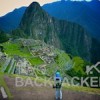


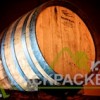
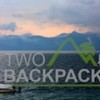

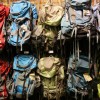






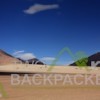

I´ve spent several hours looking for a nice backpack online, just to realize the one that looked perfect is way too expensive, not to mention that I live in Ecuador and shipping /custom fees would be very high.
Anyway, you recommend a 30 L backpack for a weekend travel and I’ve beel looking for that size for a world travel with my 4yo son. All should fit inside the backpack, according to my plans, of course.
I’m small and tiny, and large backpacks are difficult for me to carry (I look like a backpack with legs and arms, lol). Also, I should save extra energy take care of my son and eventually hold him (he’s a good walker, though).
Am I being unrealistic about the size of the backpack? I don’t plan to carry a tend. Maybe very light sleeping bags. Also, our clothes are small
Any thoughts are very much appreciated
The preferred size of a backpack can very greatly from individual to individual. If you know you can pack everything in a 30L bag for long term travel, then go for it! In my opinion it will be a challenge, but it’s not impossible. Before you purchase your pack, lay all your belongings that you expect to travel with on the floor. Get an idea of the size of all the items. This will provide you some guidance on finding a pack that is right for you. If you are still unsure, purchase a backpack from a story that has a return policy This will enable you to do some test packing to ensure it’s the right size for you. Let us know what size you get and your backpacking plans!
Couldn’t have said it better myself. Hope your packs serve you well!
That’s because you taught us most of this stuff when we visited you at REI. Thanks again Brendan for all your help.
Thanks for the reply. I went back to the store and confirmed that it’s not a 30l backpack, but a 44 L - sorry
We’re going to do some “trial” trips here in Ecuador to see how it goes. We recently went on a week trip with a small backpack (about 16L), and it was OK. It was challenging to fit everything inside, but I’m glad I did it because of the weight. My 4.5 year old is a great walker, but I don’t want to make him carry anything so he can go further.
We’ll keep “trial traveling” here. Ecuador is a great place for backpackers, by the way
That’s a nice article with some good infos for everyone who is thinking of buying a backpack.
I’ve bought myself a backpack which you can open a bit similar like a usual suitcase. That way it’s easier to get to your stuff. But you can’t upload it with extra space on the top of it, which is fine, too. That way my wife isn’t allowed to shop that much.
I just went backpack shopping yesterday. I decided on the Deuter Futura (32 Liters). It’s extremely comfortable.
I will be travelling very light and minimalistic, so 32 Literes is definitely enough. Especially in southeast Asia, where it’s warm everywhere and I don’t need thick clothes.
Thanks for the tip on metal mesh. I’m going to India for 6 months, and am going to need it!
I agree with some of the comments above regarding smaller pack size (at least for those who are not camping). I’ve been traveling through SE Asia for the last 2 months with a 46L pack and could probably go a bit smaller (note that this even includes my work gear including a15″ MacBook Pro). No, I don’t have dozens of outfits to wear, but when you’re walking through Thailand in the heat and humidity, you will be glad you picked a smaller pack. It is also surprising how little you really need once you get on the road. I even gave away some clothing in Indonesia that I wasn’t wearing.
I am also planning to head to colder climates in 2025, and will just buy warm clothes at that point rather than lug them around Asia. Just remember that even in remote areas you can buy almost anything you need. Better to pack light and find out what you need when you get there (where it is usually much cheaper).
Absolutely Brie, choosing the size of your backpack is entirely a personal preference. And typically the lighter you can possibly go, the more comfortable you will be, especially as a hiker. When we first left for our long term trip we over packed clothes, and as you did we ended up giving them away immediately. Now, we know, you can buy anything on the road, except some nice ExOfficio underwear.
LOL I think I guard my ExOfficio underwear more than my MacBook Pro. Whenever we leave a place I do an “ExOfficio” check to make sure I didn’t leave any hang-drying somewhere.
We had a friend come visit us in Argentina after 7 months of traveling and what did we ask him to bring us from the States? More ExOfficio underwear!